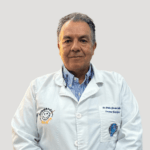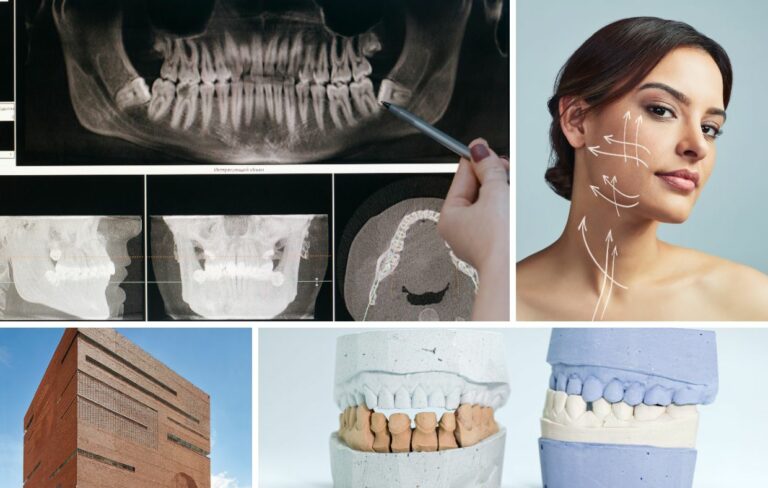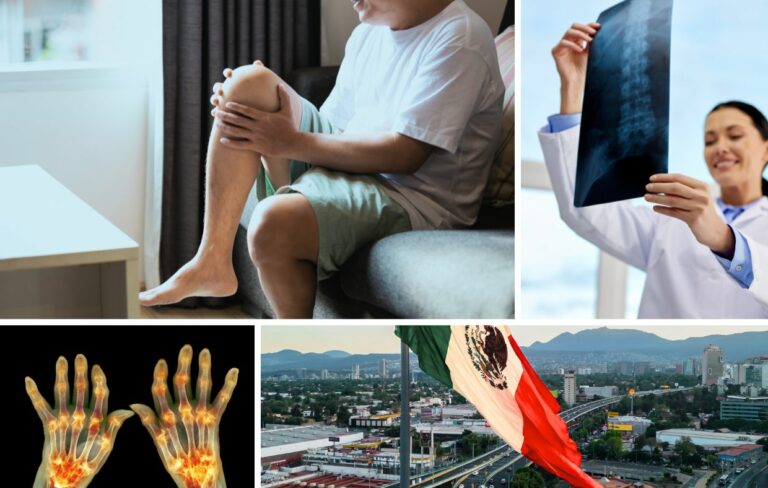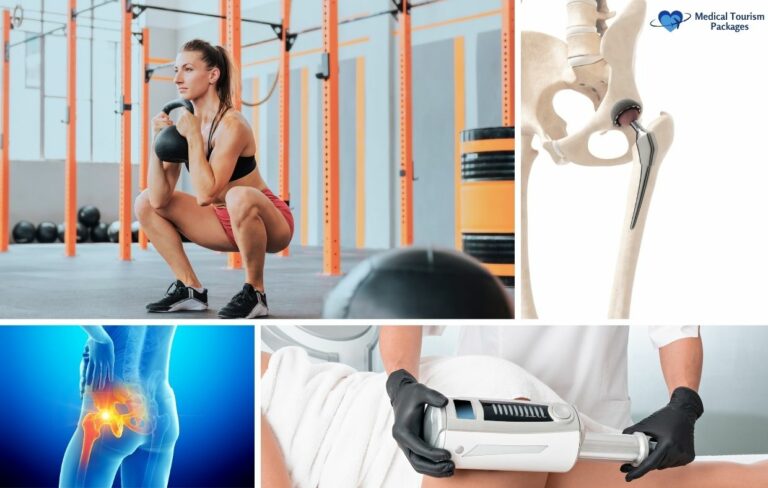Book Appointment Now
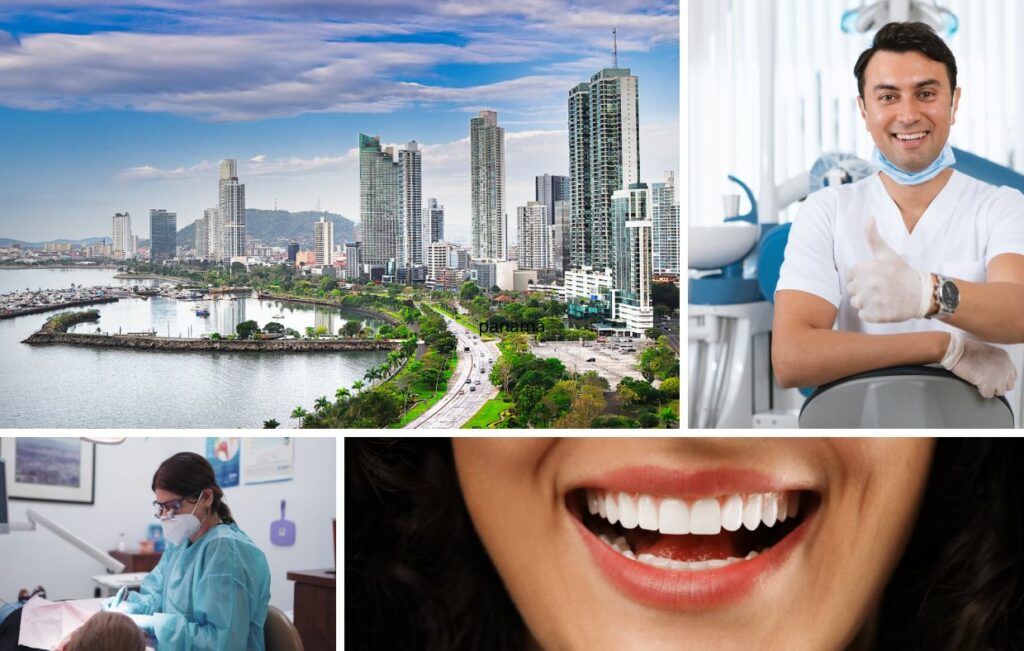
Dental Tourism in Panama: Costs, Quality Standards, and Complete Planning Guide
Panama has emerged as a leading destination for dental tourism in Central America, offering medical tourists significant cost savings of 50-75% compared to the United States and Canada without compromising quality care. Complex procedures like full-mouth restorations, dental implants, and veneers are available at a fraction of North American prices.
The country uses the US dollar as its official currency, eliminating exchange rate risks. The healthcare infrastructure meets international standards, with Hospital Punta Pacifica holding Joint Commission International (JCI) accreditation and maintaining an affiliation with Johns Hopkins Medicine International. Patient outcomes show 97% satisfaction rates and 95% long-term success rates for implants and restorative work.
This guide covers procedure costs, safety standards, clinic selection, travel logistics, and follow-up care to help you plan your dental trip successfully.
Why Does Panama Stand Out for Dental Tourism?
When evaluating dental tourism destinations, several factors distinguish Panama from other options in Latin America and beyond. The country offers a unique combination of quality, convenience, and cost savings that makes it particularly attractive for North American patients.
Currency Stability: Panama uses the US dollar as its official currency, eliminating exchange rate volatility and allowing accurate budgeting throughout your trip.
Healthcare Standards: Hospital Punta Pacifica holds JCI accreditation with Johns Hopkins Medicine International affiliation, ensuring American-standard safety protocols. Panama’s Ministry of Health (MINSA) provides mandatory oversight for all dental practices, while the Technical Health Council enforces credential validation for foreign-trained dentists.
Professional Qualifications: Many dental professionals hold memberships in the American Dental Association (ADA) and Academy of General Dentistry (AGD), requiring continuous education.
Technology: Most facilities offer 3D CBCT imaging, CAD/CAM systems for prosthetic accuracy, and digital radiography. Premium ceramic systems like Procera, Lava, and Cercon are standard.
Safety: All clinics follow CDC guidelines with mandatory autoclave sterilization. Treatment philosophy emphasizes conservative care, prioritizing tooth preservation over aggressive extractions.
What Are the Actual Dental Costs in Panama vs North America?
One of the most compelling reasons patients choose Panama is the substantial financial savings compared to North American dental care. Understanding the specific costs helps you evaluate whether the savings justify the travel investment.
| Procedure | Panama Cost (USD) | US/Canada Cost (USD) | Potential Savings |
|---|---|---|---|
| Single Dental Implant with Crown | $1,500–$2,100 | $3,000–$6,000 | Up to 75% |
| Full Arch Reconstruction (All-on-4) | $8,000 average | $24,000+ | Up to 67% |
| Porcelain Veneer (per tooth) | $400–$700 | $1,200–$2,500 | Up to 84% |
| Zirconia Crown (per tooth) | $750 | $1,500–$2,500 | Up to 70% |
| Root Canal (Molar) | $300–$500 | $500–$900 | Up to 67% |
| Dental Cleaning | $30–$100 | $120+ | Up to 75% |
| Fillings | $90–$150 | Varies | Significant savings |
Total Cost Analysis: For a single implant, you’ll spend $1,800-$4,100 total in Panama (procedure plus accommodation) compared to $4,500-$7,000 for the procedure alone in the US. For full arch reconstruction, the $16,000 difference covers flights and extended stays with significant savings remaining. Even accounting for two round-trip flights for implant procedures, hotel stays, meals, and ground transportation, most patients save between $5,000 and $15,000 depending on the complexity of their treatment.
Maximizing Value: Add preventative care like cleanings ($30-$100) and fillings ($90-$150) to your treatment plan. This benefits patients who delay preventative care at home due to high costs. Many medical tourists also bundle multiple cosmetic procedures during a single trip, such as combining veneers with whitening or addressing several crowns simultaneously, which further improves the cost-benefit ratio of international travel.
What Dental Procedures Are Available in Panama?
Panama’s dental clinics offer a comprehensive range of treatments using internationally recognized materials and cutting-edge technology. Whether you need basic restorative work or complex full-mouth reconstruction, you’ll find experienced specialists equipped with modern tools.
Major Procedures: Single and multiple implant replacements, All-on-4 full arch reconstruction, full mouth restoration, zirconia crowns, root canals, porcelain veneers (typically 6-10 teeth), professional whitening, cleanings, fillings, and comprehensive checkups.
Materials and Technology: Clinics use premium implant brands including Nobel Biocare and Straumann with global warranty support. Prosthetic materials include Procera, Lava, and Cercon ceramics. Digital Smile Design software creates 3D treatment previews before any work begins. Warranty coverage typically spans 5-10 years for implants and 5 years for crowns and bridges.
How to Plan Your Panama Dental Trip?
Successful dental tourism requires careful planning from the initial consultation through your return home. Understanding the timeline and logistics helps you prepare properly and avoid unexpected complications.
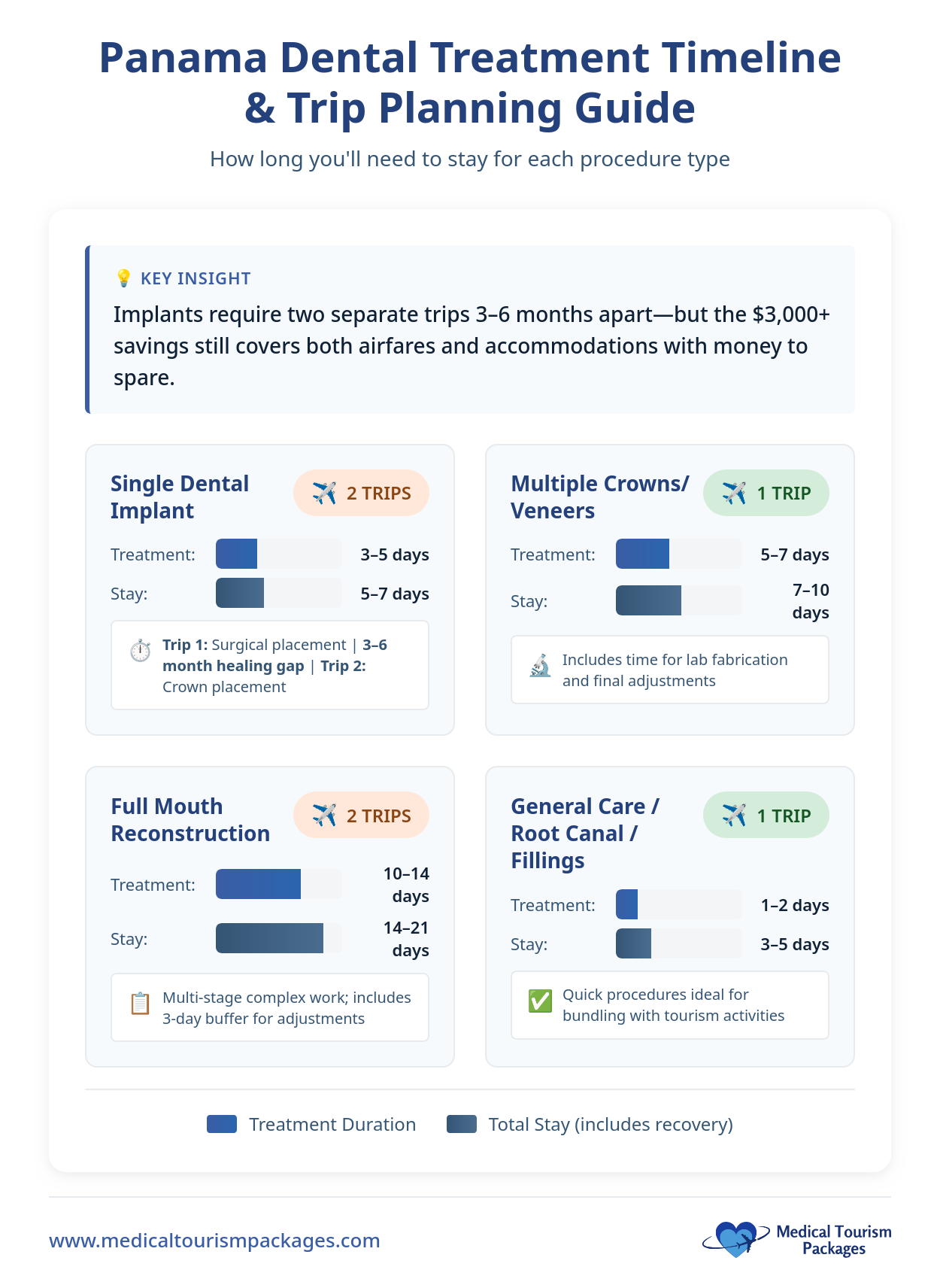
Initial Consultation: Most clinics offer free online consultations. Submit dental photographs and X-rays through a secure portal, and receive a detailed treatment proposal within 2-3 business days including procedures, materials, timeline, and itemized costs. Use this consultation phase to compare multiple clinics and ask detailed questions about their approach, materials, and post-treatment support.
Treatment Duration: Different procedures require varying amounts of time in Panama, so plan your travel schedule accordingly.
| Procedure Type | Treatment Time | Recommended Stay | Follow-up Trips |
|---|---|---|---|
| Single Implant | 3-5 days | 5-7 days | 2 trips (3-6 months apart) |
| Multiple Crowns/Veneers | 5-7 days | 7-10 days | 1 trip |
| Full Mouth Reconstruction | 10-14 days | 14-21 days | Often 2 trips |
| Root Canal/Filling | 1-2 days | 3-5 days | 1 trip |
Two-Phase Implant Protocol: Implants require a biological waiting period that cannot be rushed. Phase 1 involves surgical placement for osseointegration (bone integration). You return home for 3-6 months while this occurs. Phase 2 includes abutment and crown placement during your second trip. While this requires two international trips, the overall savings still significantly exceed domestic treatment costs. Some patients schedule their second trip to coincide with vacation time or holidays to make the travel more enjoyable.
Transportation: Tocumen International Airport sits 16-18 minutes from downtown Panama City. Fixed-rate taxis cost $20-$35. Stay near Punta Pacifica or San Francisco neighborhoods for convenient clinic access. Most clinics coordinate airport pickup and assign patient coordinators. Book accommodations with flexible cancellation policies in case treatment timelines need adjustment.
What Are Panama’s Dental Safety Standards?
Medical tourists naturally have concerns about the quality and safety of care in foreign countries. Panama addresses these concerns through multiple layers of regulatory oversight and internationally recognized accreditation systems.
Key Standards:
- Panama’s Ministry of Health (MINSA) provides mandatory oversight establishing clinical and sanitation standards
- Technical Health Council enforces credential validation for foreign-trained dentists
- Hospital Punta Pacifica holds JCI accreditation with Johns Hopkins affiliation
- Mandatory autoclave sterilization following CDC guidelines
- 3D CBCT imaging, digital radiography, and CAD/CAM systems standard
Outcomes: Clinics report 97% patient satisfaction and 95% long-term success rates, comparable to developed healthcare markets.
How to Select a Reputable Clinic in Panama?
Your clinic selection will ultimately determine the success of your dental tourism experience. Taking time to properly vet clinics and verify credentials is the most important step in your planning process. Start by confirming your clinic is in the Republic of Panama, not Panama City, Florida, as this confusion occurs surprisingly often.
Vetted Clinic Options:
| Clinic Name | Location | Specialization | Key Credential |
|---|---|---|---|
| Pacific Dental Clinic | Punta Pacifica | General/Cosmetic/Implants | JCI Hospital (Johns Hopkins) |
| Clinica Ford Dental Spa | San Francisco | Periodontics/Implants | 18+ years, 5-year guarantee |
| DENTAL WORKS | Via Israel | General/Cosmetic | WhatClinic Featured |
Pacific Dental Clinic operates within Hospital Punta Pacifica, providing access to hospital-level emergency support and multi-disciplinary specialists. Clinica Ford Dental Spa specializes in complex implant cases and full-mouth reconstruction with nearly two decades of experience serving international patients.
Verification Checklist:
- Request professional diplomas and specialty certificates
- Check Panamanian Ministry of Health (MINSA) registration
- Verify Technical Health Council credential validation
- Ask for 5+ references from North American patients
- Request documentation of sterilization procedures
- Confirm written warranty terms before treatment
- Secure itemized materials list specifying exact brands
- Ensure patient coordinators speak fluent English
Warning Signs:
- Claims of identical results to US clinics at 90% savings
- Vague timelines without osseointegration waiting periods
- Pressure to book without sufficient time for research
- Difficulty providing verifiable credentials
- Poor English communication if English is your primary language
What Are the Best Locations in Panama for Treatment and Recovery?
Where you stay during your treatment and recovery significantly impacts your overall experience. Panama City offers the most comprehensive medical infrastructure, while other areas provide excellent recovery environments once the critical post-operative period has passed.
Panama City hosts the highest concentration of international dental clinics in Punta Pacifica and San Francisco neighborhoods, just 16-18 minutes from the airport with direct access to JCI-accredited Hospital Punta Pacifica. For the first 5 days after any surgical procedure, you should stay near your clinic to ensure immediate access to your dentist if complications arise.
Recovery Planning: After the initial critical period, you can transition to more scenic destinations that support relaxation and healing.
| Location | Distance | Recovery Phase | Key Features |
|---|---|---|---|
| Punta Pacifica/San Francisco | In city | Days 1-5 | Immediate clinic/emergency access |
| Casco Viejo/Panama Canal | 15-30 min | Days 1-5 | Light cultural activities, close to hospitals |
| Boquete/Highlands | 6-7 hours | Days 5+ | Tranquil mountain environment |
| Bocas del Toro | Flight/drive | Days 5+ | Coastal relaxation |
What Are Panama’s Entry Requirements for Medical Tourists?
Panama makes entry straightforward for North American and European travelers with some of the most generous visa policies in Latin America.
Entry Requirements:
- US, Canadian, and EU citizens receive automatic 180-day tourism entry (no visa required)
- Passport valid for minimum 3 months from entry
- Must demonstrate minimum $500 in funds
- Confirmed round-trip ticket required
- Valid US/Canada/EU visa exempts from all visa requirements
Flight Access: Direct flights to Tocumen International Airport available from major North American cities.
What Are the Advantages and Risks of Dental Tourism in Panama?
Every medical tourism decision involves weighing benefits against potential risks. Being honest about both sides helps you make the right choice for your situation.
Key Advantages:
Panama offers compelling benefits that make it a top choice for dental tourists seeking quality care at reduced costs.
| Category | Benefits |
|---|---|
| Financial | 50-75% savings; USD eliminates currency risk; particularly beneficial for uninsured patients |
| Quality | JCI accreditation; American-standard protocols; 97% satisfaction; 95% success rates |
| Logistics | Close to North America; 16-18 minute airport transfers; 180-day visa; same time zones |
| Communication | English fluency in premier clinics; cultural familiarity |
| Treatment | Conservative approach; tooth preservation prioritized |
Critical Disadvantages:
However, several important challenges require careful consideration and planning before committing to treatment abroad.
Two-Trip Requirement: Implants mandate a second trip 3-6 months after placement, creating additional travel costs. Full mouth reconstruction requires 14-21 days with potential unplanned accommodation costs.
Limited Legal Recourse: Pursuing malpractice lawsuits in Panama is highly challenging. You must rely on contractual warranties rather than judicial protection.
Post-Return Follow-Up (Biggest Risk): North American dentists often refuse to manage complications from foreign dental work, citing liability concerns. This forces expensive emergency care at home or urgent return trips. The solution is to identify a willing local dentist BEFORE travel who will perform routine maintenance and secure this commitment in writing.
Insurance Gaps: Standard US/Canadian dental insurance excludes elective treatment abroad. If complications require correction at home, insurance may resist coverage.
What Are the Aftercare and Warranty Terms in Panama?
Your dental work requires ongoing maintenance and monitoring after you return home. Understanding warranty terms and establishing a local follow-up care plan protects your investment and ensures long-term success.
Remote Support: Reputable clinics offer video calls and photo submission systems for monitoring. These help with minor concerns but cannot substitute for in-person intervention if serious complications arise.
Warranty Requirements:
| Warranty Aspect | Details |
|---|---|
| Duration | Crowns/bridges: 5 years; Implants: 5-10 years |
| Oral Hygiene | Proper brushing and flossing required |
| Smoking | Complete abstinence mandatory |
| Check-ups | Annual visits required (local dentist acceptable) |
| Bruxism | Must wear prescribed night guard |
| Documentation | Get itemized written warranty BEFORE treatment |
Warranty Void If: Poor oral hygiene, smoking, missed check-ups, or not wearing prescribed night guard.
Critical Step: Identify a local US/Canadian dentist willing to maintain foreign dental work BEFORE traveling. This addresses the single largest non-clinical risk.
How Does Panama Compare to Other Dental Tourism Destinations?
Panama positions itself as a premium dental tourism destination rather than competing on price alone. While prices run 10-15% higher than Colombia, Panama offers structural advantages that reduce non-clinical risks and improve the overall patient experience.
| Feature | Panama Advantage |
|---|---|
| Currency | USD official currency (zero exchange risk) |
| Hospital Standards | JCI accreditation via Johns Hopkins |
| Visa Policy | 180-day exemption (most generous in region) |
| Airport Access | 16-18 minutes to clinics (shortest transfers) |
| Language | High English prevalence |
| Outcomes | 97% satisfaction, 95% success rates |
Panama targets sophisticated medical tourists prioritizing safety and American-standard protocols over maximum savings alone.
Is Dental Tourism in Panama Right for You?
Panama dental tourism works best for patients seeking substantial savings on major procedures who are comfortable with international travel and willing to invest time in thorough planning. You’re an ideal candidate if you need complex restorative work like implants or full-mouth reconstruction, can commit to the two-trip model for implants, and are uninsured or underinsured. Most importantly, you must be able to identify a local dentist for follow-up care before traveling.
Before booking, prioritize JCI-affiliated facilities, obtain explicit written warranty terms, insist on documented materials specifying exact brands, plan realistically for two trips if getting implants, and secure commitment from a local dentist for routine maintenance. Success requires rigorous due diligence, but the financial savings of $5,000-$15,000 or more justify the effort for most patients facing prohibitive domestic costs.
Need Help Planning Your Dental Tourism Journey?
Medical Tourism Packages simplifies your dental tourism experience in Panama. Our facilitation services connect you with vetted clinics, coordinate travel logistics, and provide comprehensive support throughout your treatment journey.
Let our experienced team handle the complexities of international dental care planning. Contact Medical Tourism Packages today to start your path toward affordable, quality dental treatment in Panama.
Frequently Asked Questions About Dental Tourism in Panama
How much can I actually save getting dental work in Panama?
You’ll typically save 50–75% on most procedures. For example, a single dental implant runs $1,500–$2,100 in Panama versus $3,000–$6,000 in the U.S. Even after flights, hotels, and meals, most patients still save $5,000–$15,000 on major treatment plans.
Is dental care in Panama safe and high quality?
Yes. Hospital Punta Pacifica holds JCI accreditation and is affiliated with Johns Hopkins Medicine International, aligning with American safety standards. Leading clinics report ~97% patient satisfaction and ~95% long-term success rates, comparable to U.S. outcomes.
Do I need to make two trips to Panama for dental implants?
Yes. Implants require osseointegration (bone integration) that typically takes 3–6 months. Trip 1 is for surgical placement; after healing at home, Trip 2 completes the abutment and crown. Even with two visits, most patients still save substantially overall.
Will my U.S. dentist provide follow-up care for work done in Panama?
Many U.S. dentists decline to maintain foreign dental work due to liability concerns. Identify and secure a local dentist willing to handle follow-up—and get their commitment in writing—before you travel. This is the single most important step for long-term success.
Does my dental insurance cover procedures done in Panama?
Standard U.S. and Canadian dental plans usually exclude elective care abroad. If complications arise at home, insurers may resist coverage. Budget for out-of-pocket costs and consider specialized travel medical insurance that includes dental treatment and complications.
How long do I need to stay in Panama for dental treatment?
It depends on the procedure: crowns and veneers typically require 7–10 days; single implant placement needs about 5–7 days; full-mouth reconstructions often take 14–21 days. Add buffer days for try-ins, lab timing, and unexpected adjustments.
What happens if something goes wrong after I return home?
Reputable clinics offer 5–10-year warranties on implants and about 5 years on crowns, plus remote follow-up via video calls and photo submissions. For serious issues, you may need to return to Panama or cover emergency care out-of-pocket at home.
Do dentists in Panama speak English?
Yes. Premier clinics—especially in Punta Pacifica and San Francisco neighborhoods—employ English-fluent dentists, specialists, and patient coordinators. Treatment plans, pricing, and aftercare instructions should be provided in English to avoid misunderstandings.
